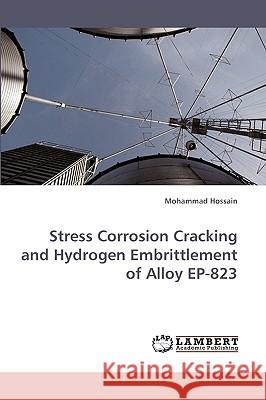Stress Corrosion Cracking and Hydrogen Embrittlement of Alloy EP-823 » książka
Stress Corrosion Cracking and Hydrogen Embrittlement of Alloy EP-823
ISBN-13: 9783838360164 / Angielski / Miękka / 2010 / 200 str.
This investigation is focused on the evaluation of stress corrosion cracking (SCC), localized corrosion, and hydrogen embrittlement (HE) susceptibility of martensitic Alloy EP-823 in neutral and acidic solutions at ambient and elevated temperatures. While no failures were observed in smooth specimens in the neutral solution, failures were noticed in the 90 C acidic solution at constant-load (CL) leading to a threshold stress ( th) of 102 ksi. The presence of a notch reduced the th value to 91 ksi in a similar environment. The ductility (%El and %RA), time-to-failure (TTF), and true failure stress ( f) were gradually reduced in both environments with increasing temperature during SSR testing. The presence of a notch, however, enhanced the f value. All polarized specimens exhibited localized attack. The application of a controlled cathodic potential further reduced the ductility, TTF and of showing the characteristics of more brittle failures. Metallographic and fractographic evaluations revealed secondary cracks along the gage section, and combination of ductile and brittle failures at the primary fracture face, respectively."
This investigation is focused on the evaluation of stress corrosion cracking (SCC), localized corrosion, and hydrogen embrittlement (HE) susceptibility of martensitic Alloy EP-823 in neutral and acidic solutions at ambient and elevated temperatures. While no failures were observed in smooth specimens in the neutral solution, failures were noticed in the 90°C acidic solution at constant-load (CL) leading to a threshold stress (σth) of 102 ksi. The presence of a notch reduced the σth value to 91 ksi in a similar environment. The ductility (%El and %RA), time-to-failure (TTF), and true failure stress (σf) were gradually reduced in both environments with increasing temperature during SSR testing. The presence of a notch, however, enhanced the σf value. All polarized specimens exhibited localized attack. The application of a controlled cathodic potential further reduced the ductility, TTF and of showing the characteristics of more brittle failures. Metallographic and fractographic evaluations revealed secondary cracks along the gage section, and combination of ductile and brittle failures at the primary fracture face, respectively.











